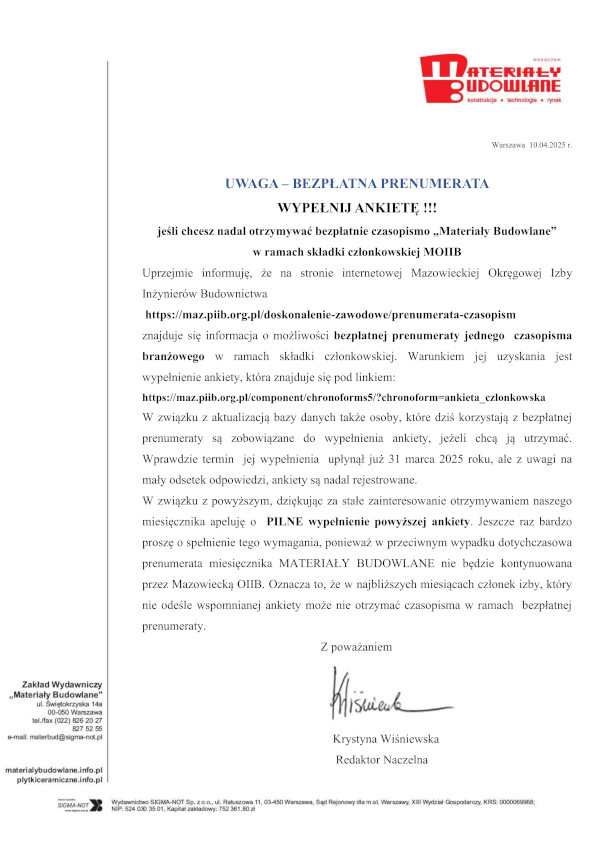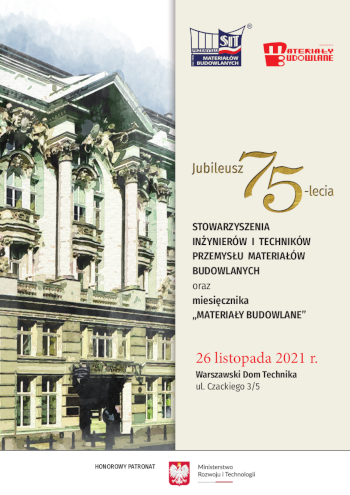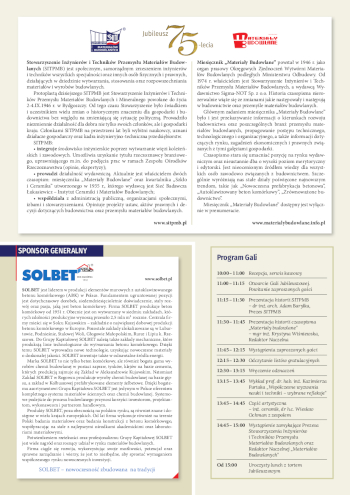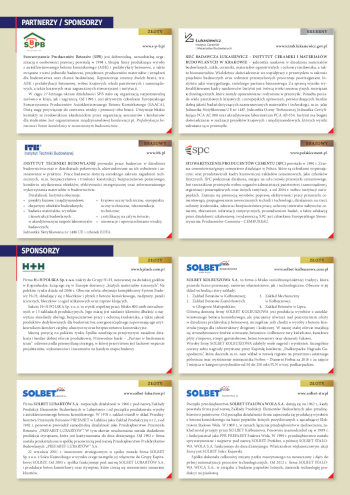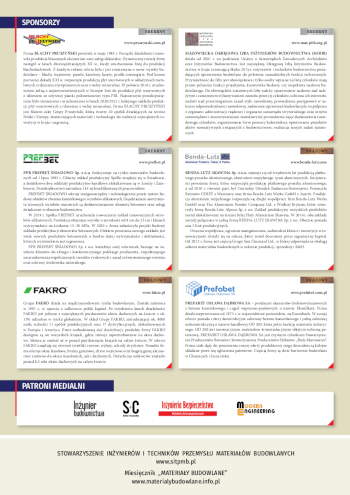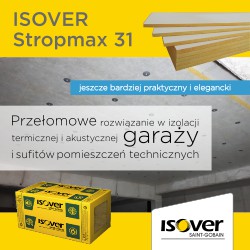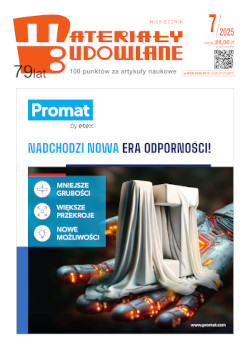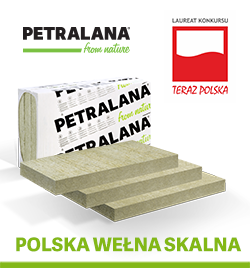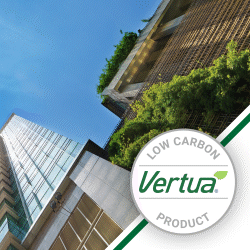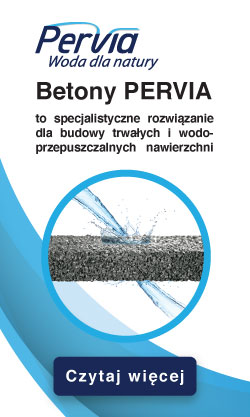Geotechniczne właściwości księżycowego regolitu
Open Access (Artykuł w pliku PDF)
citation/cytuj: Kaczmarzyk M. Geotechnical properties of lunar regolith. Materiały Budowlane. 2025. Volume 634. Issue 06. Pages 128-134. DOI: 10.15199/33.2025.06.15
Dr. Ing. Marcin Kaczmarzyk, Rzeszow University of Technology, Faculty of Civil and Environmental Engineering and Architecture
ORCID: 0000-0001-5605-5279
Correspondence address: Ten adres pocztowy jest chroniony przed spamowaniem. Aby go zobaczyć, konieczne jest włączenie w przeglądarce obsługi JavaScript.
DOI: 10.15199/33.2025.06.15
Review paper / Artykuł przeglądowy
Abstract. This article is a synthetic review of the current state of knowledge of the basic geotechnical parameters of regolith, i.e.lunar soil. In the era of the intensifying next space race, it was considered potentially useful to summarize key information about the properties of the soil, on which the first extraterrestrial construction structures are likely to be built in the coming years. The paper addressed such issues as the origin and evolution of the regolith, its grain size, bulk density, porosity, degree of compaction, bearing capacity and cohesion.
Keywords: lunar regolith; soil grain size; degree of compaction; lunar buildings.
Streszczenie. W artykule zaprezentowano syntetyczny przegląd obecnego stanu wiedzy z dziedziny podstawowych parametrów geotechnicznych regolitu, czyli księżycowego gruntu. W dobie intensyfikującego się kolejnego wyścigu kosmicznego, za potencjalnie przydatne uznano podsumowanie kluczowych informacji o właściwościach podłoża gruntowego, na którym w najbliższych latach mają szanse powstać pierwsze pozaziemskie konstrukcje budowlane. Odniesiono się przede wszystkim do zagadnień takich, jak geneza i ewolucja regolitu, jego uziarnienie, gęstość objętościowa, porowatość, stopień zagęszczenia, nośność oraz spójność.
Słowa kluczowe: księżycowy regolit; uziarnienie gruntu; stopień zagęszczenia; budownictwo księżycowe.
Literature
[1] Artemis PLAN- NASA’s Lunar Exploration Program Overview September 2020 https://www. nasa. gov/sites/default/files/atoms/files/artemis_plan- -20200921. pdf.
[2] Artemis Deep Space Habitation: Enabling a Sustained Human Presence on the Moon and Beyond; https://ntrs. nasa. gov/api/citations/20220000245/ downloads/Artemis%20Deep%20Space%20Habitation%20Enabling% 20a%20Sustained%20Human%20Presence%20on%20the%20 Moon%20and%20Beyond%20 (3). pdf.
[3] Chiny i Rosja podpisałymemorandumw sprawie bazy na Księżycu – kosmonauta. net https://kosmonauta. net/2021/03/chiny-i-rosja-podpisaly-memorandum- w-sprawie-bazy-na-ksiezycu/.
[4] McKay DS,A. i in. The Lunar Regolith, w Lunar Sourcebook:AUser’s Guide to theMoon, http://www.lpi.usra.edu/publications/books/lunar_sourcebook/ pdf/Chapter07.pdf.
[5] Kaczmarzyk M. Zjawiska impaktowe jako nadrzędny proces kształtujący powierzchnię Księżyca. Acta Soc Metheorit Pol. 2024; 15: 56–70.
[6] Alshibli K. Lunar Regolith. https://alshibli. utk. edu/research/LR/lr. php.
[7] Wang S, Wu Y, Blewett D. et al. Submicroscopic metallic iron in lunar soils estimated from the in situ spectra of the Chang’E-3 mission. Geophys. Res. Lett. 2017; vol. 44, no. 8, ss. 3485 – 3492.
[8] Taylor GJ, I in. Lunar rocks, w Lunar Sourcebook: A User’s Guide to the Moon, http://www.lpi.usra. edu/publications/books/lunar_sourcebook/pdf/Chapter06. pdf.
[9] Lucey P, I in. Understanding the Lunar Surface and Space-Moon Interactions. Rev. Mineral. Geochem. 2006; vol. 60, no. 1, ss. 83–219.
[10] Carrier D, Olhoeft GR,MendellW. Physical properties of the lunar surface, wLunar Sourcebook:AUser’sGuide to theMoon; http://www.lpi.usra.edu/ publications/books/lunar_sourcebook/pdf/Chapter09.pdf.
[11] Lambe TW, Whitman RV. Soil Mechanics. The Moon. 1969; vol. 7, ss. 131–148.
[12] CarrierWD. Lunar soil grain size distribution. TheMoon. 1973; vol. 6, ss. 250–263.
[13] PN-86/B-02480 Grunty budowlane – określenia, symbole, podział I opis gruntów.
[14] Cadenhead D, I in. Some surface area and porosity characterizations of lunar soils. Proc. 8th Lunar Sci. Conf., Houston, TX, Mar. 1977, ss. 1291–1303.
[15] Lunokhod programme,Wikipedia. https://en.wikipedia.org/wiki/Lunokhod_ programme.
[16] Keihm SJ, LangsethMG. Lunar microwave brightness temperature observations reevaluated in the light ofApollo program findings. Icarus. 1975; vol. 24, ss. 211–230.
[17] Vasavada AR, I in. Lunar equatorial surface temperatures and regolith properties from the Diviner Lunar Radiometer Experiment. J. Geophys. Res. 2012; vol. 117.
[18] Mitchell JK i in. Soil mechanics, inApollo 16 Preliminary Science Report, NASA SP-315, ss. 8–29, 1972.
[19] DukeMB i in. Genesis of lunar soil at Tranquillity Base. Geochim. Cosmochim. Acta Suppl., vol. 1, Proc. Apollo 11 Lunar Sci. Conf., ss. 347 – 361, 1970.
[20] Mitchell JK i in. Apollo Soil Mechanics Experiment S-200. Final report. NASA Contract NAS 9–11266, Space Sciences Laboratory Series, no. 15, 1974.
[21] PN-S-02205: 1998, Drogi samochodowe – Roboty ziemne –Wymagania i badania.
[22] BN-88/8932-02, Podtorze i podłoże kolejowe – Roboty ziemne – Wymagania i badania.
[23] Instrukcja badań podłoża gruntowego budowli drogowych i mostowych Cz. 1, Cz. 2. ftp://zdw.home.pl/wzp3/271-2_15/Instrukcja_badan_podloza/ INSTRUKCJA%20BADAN%20%20PODLOZA%20GRUNTOWEGO% 20CZ.1.pdf.
[24] CarrierWD, Mitchell JK, Mahmood A. The nature of lunar soil. J. Soil Mech. Found. Div., ASCE. 1973; vol. 99, ss. 813–832.
[25] Abbas M. i in. Lunar dust charging by photoelectric emissions. Planet. Space Sci. 55, 7-8, 2007, ss. 953-965.
[26] han-Mayberry N. The lunar environment: Determining the health effects of exposure to moon dusts. Acta Astronaut. 2008, 63, 7–10, ss. 1006-1014.
Received: 07.01.2025 r. / Artykuł wpłynął do redakcji: 07.01.2025 r.
Revised: 16.02.2025 r. / Otrzymano poprawiony po recenzjach: 16.02.2025 r.
Published: 24.06.2025 r. / Opublikowano: 24.06.2025 r.
Materiały Budowlane 06/2025, strona 128-134 (spis treści >>)


